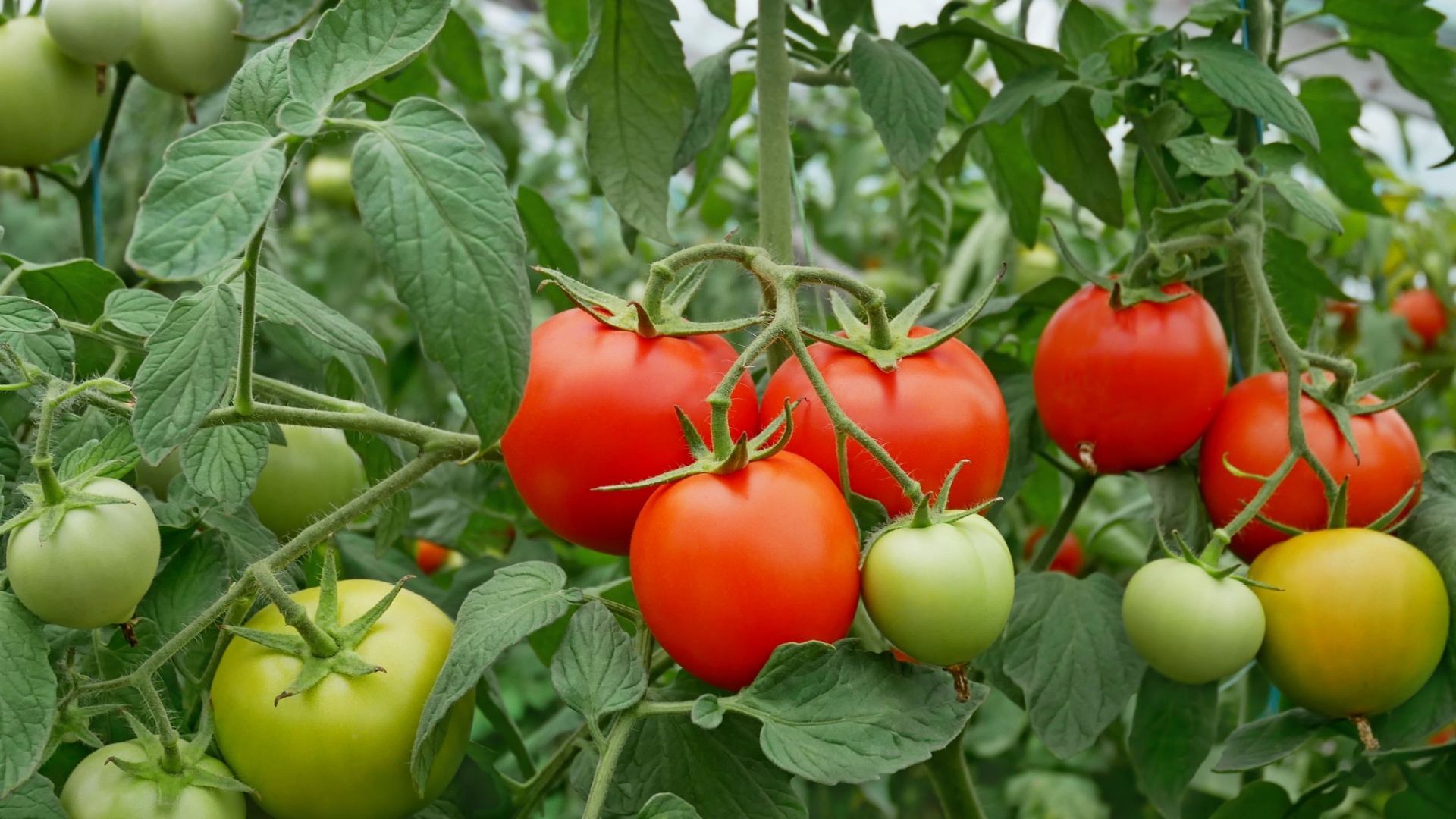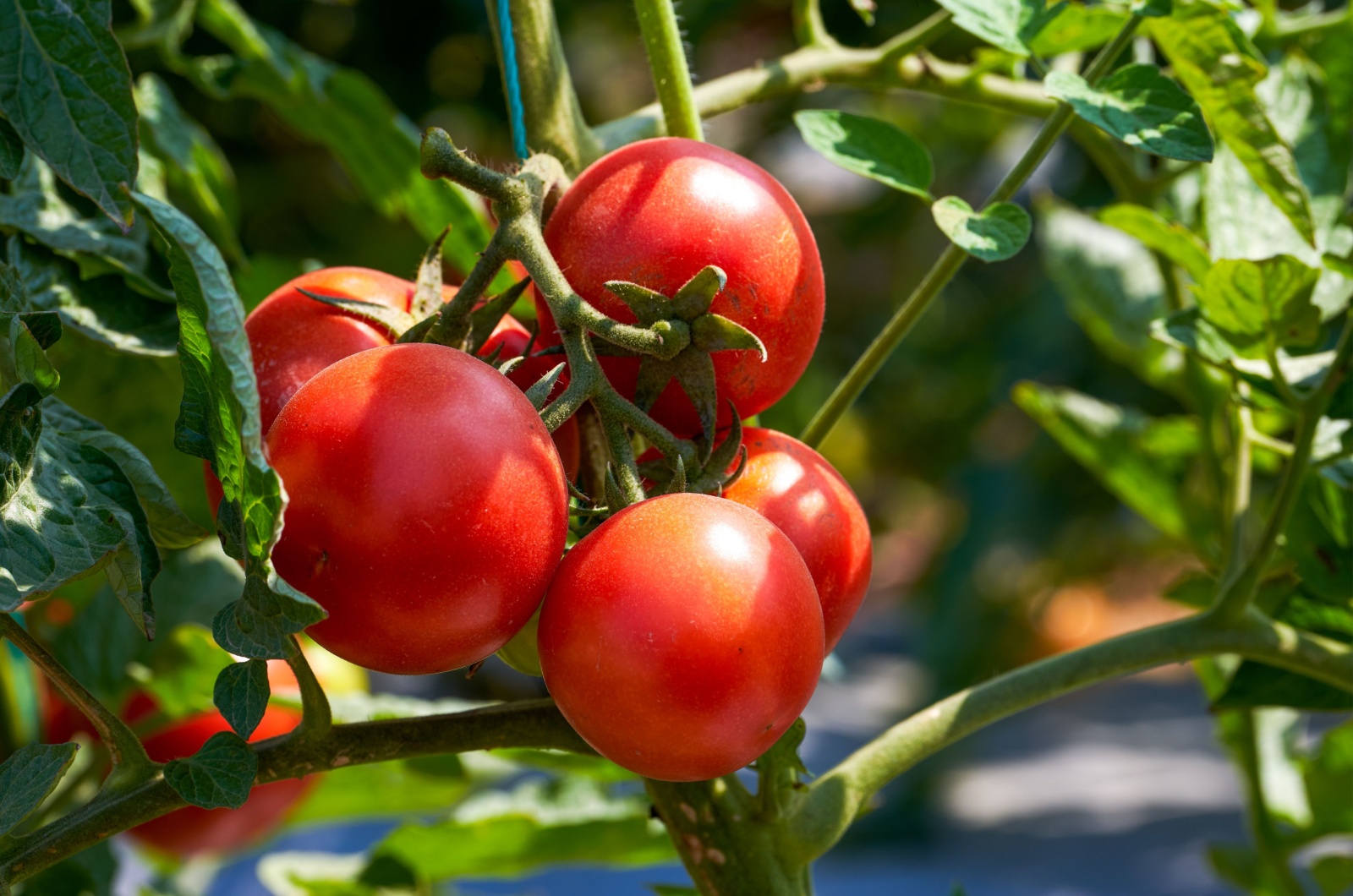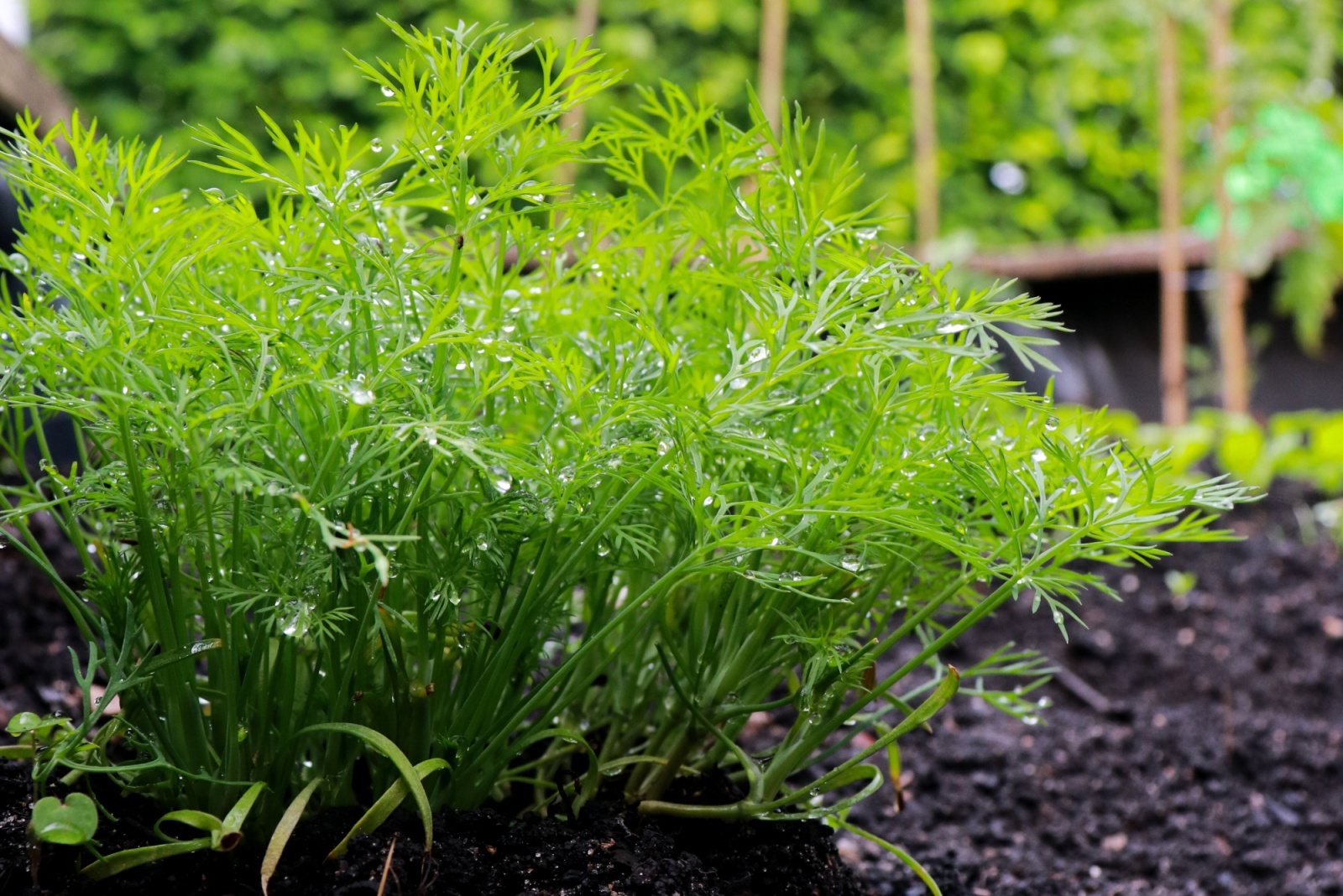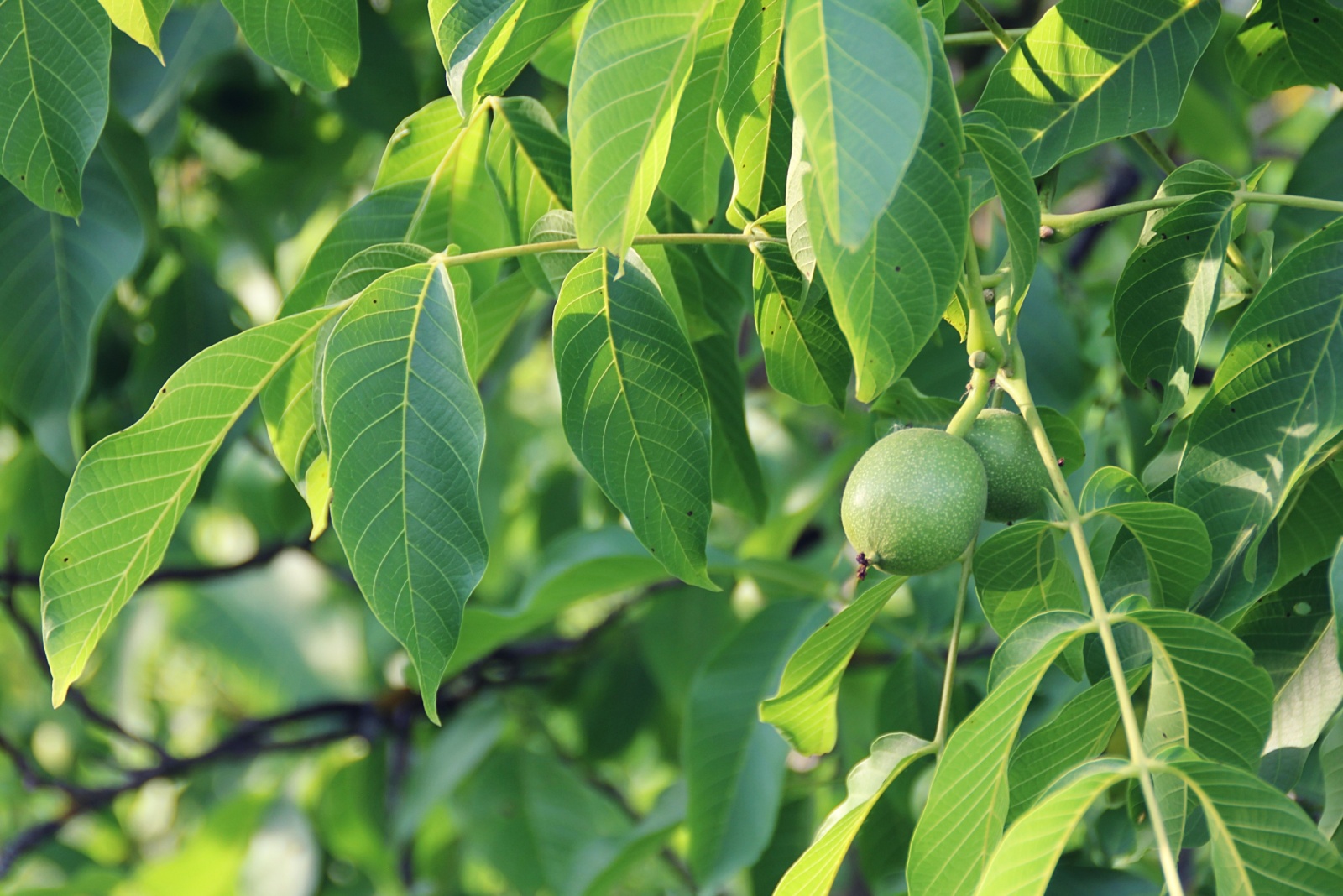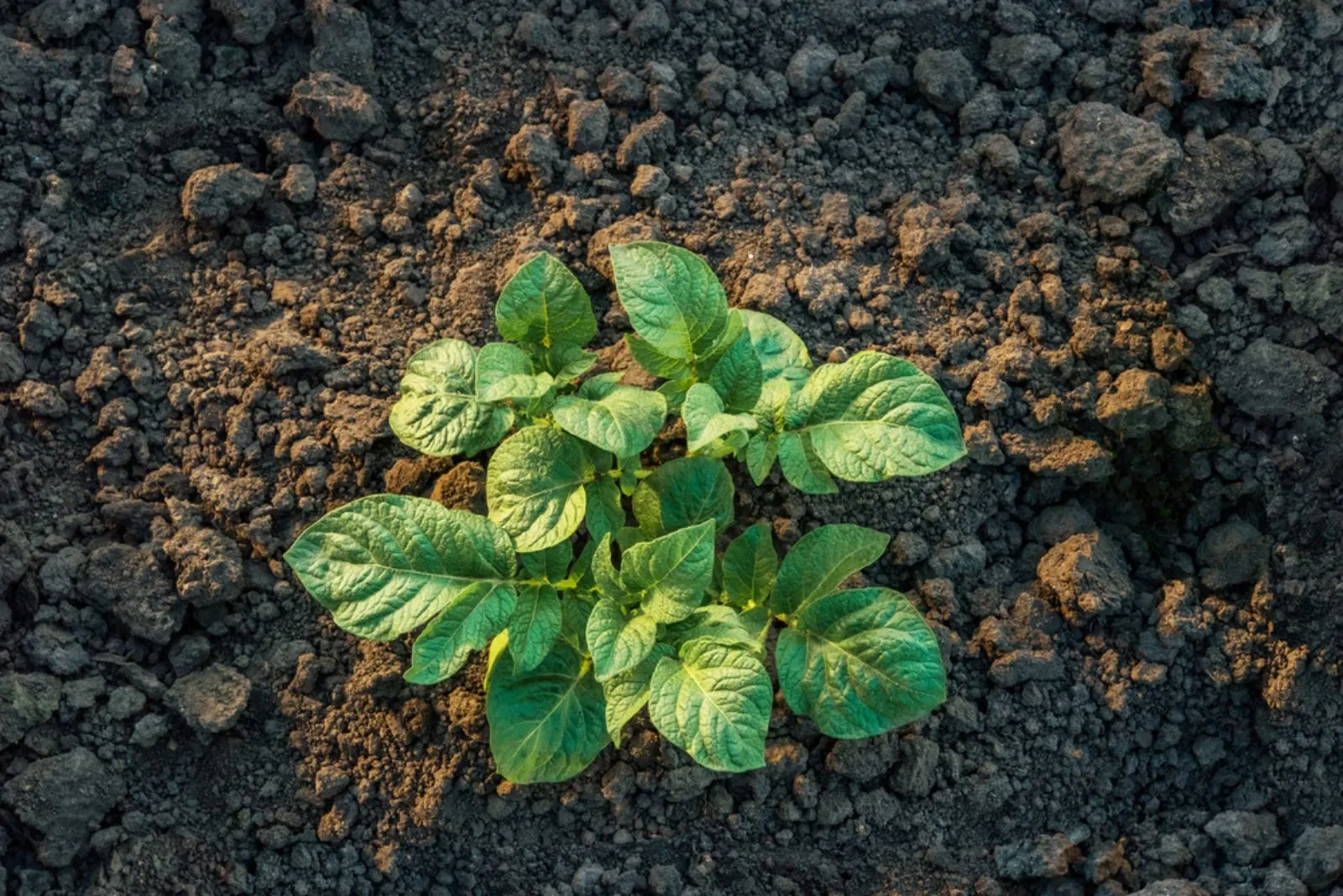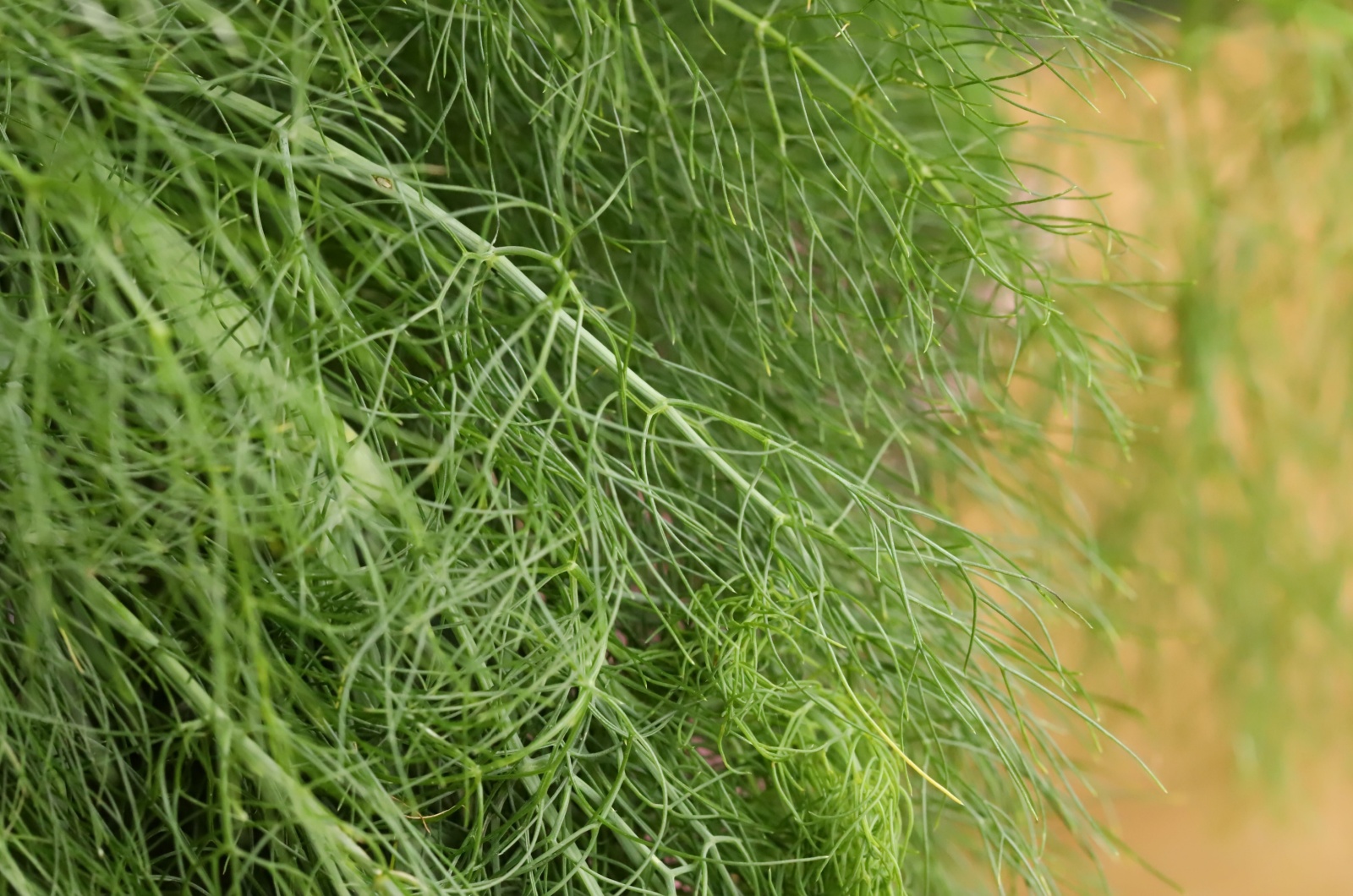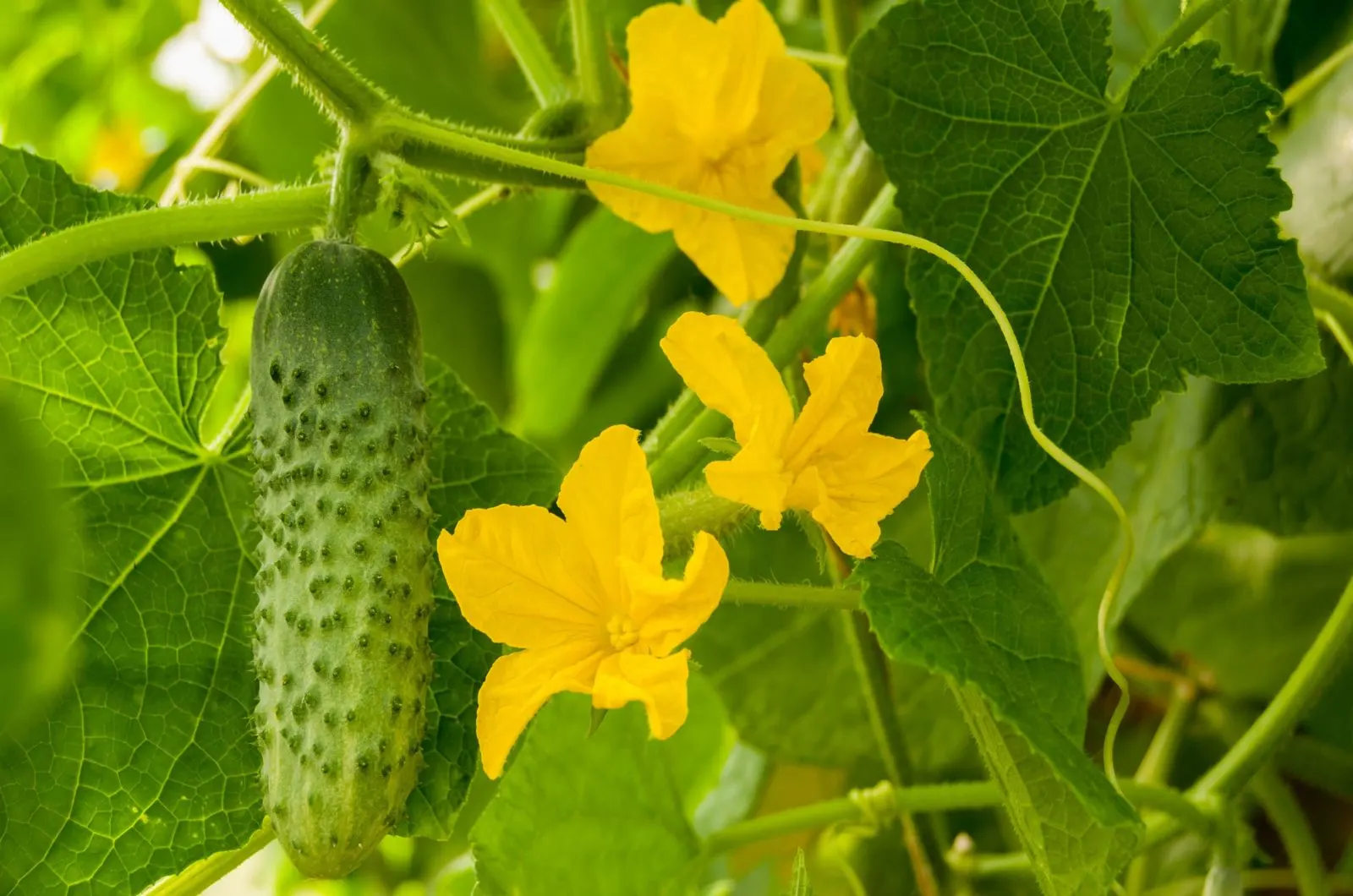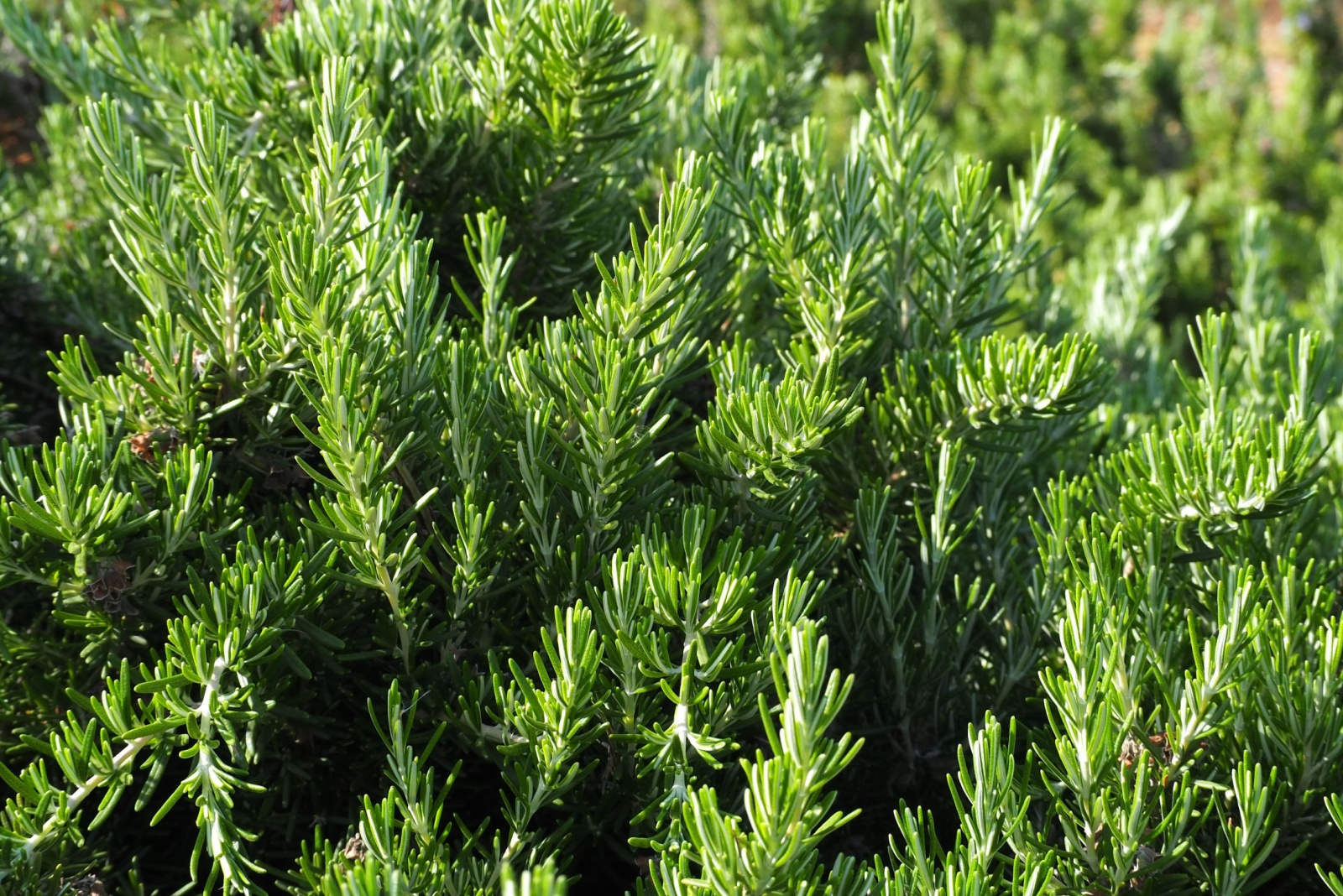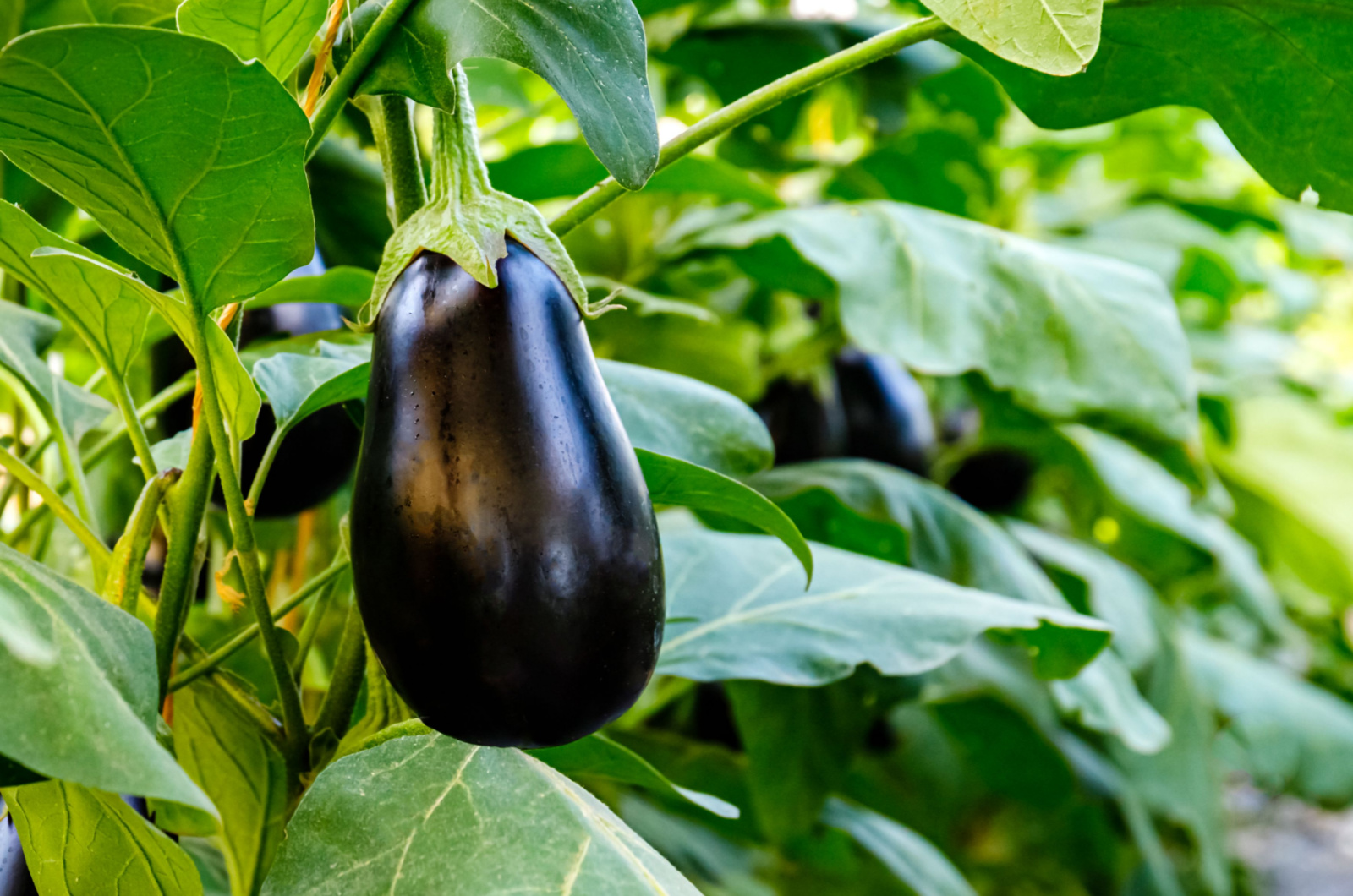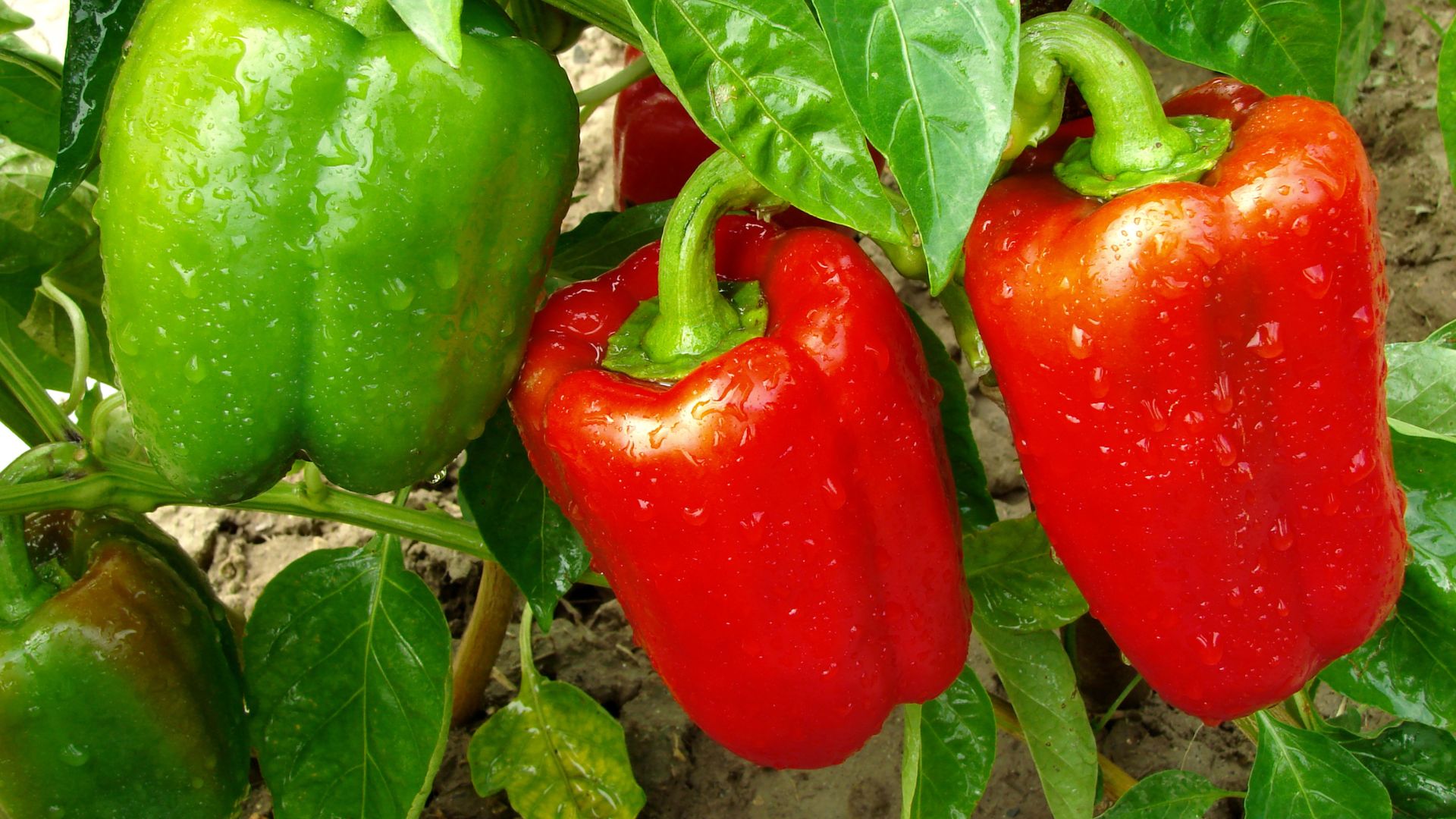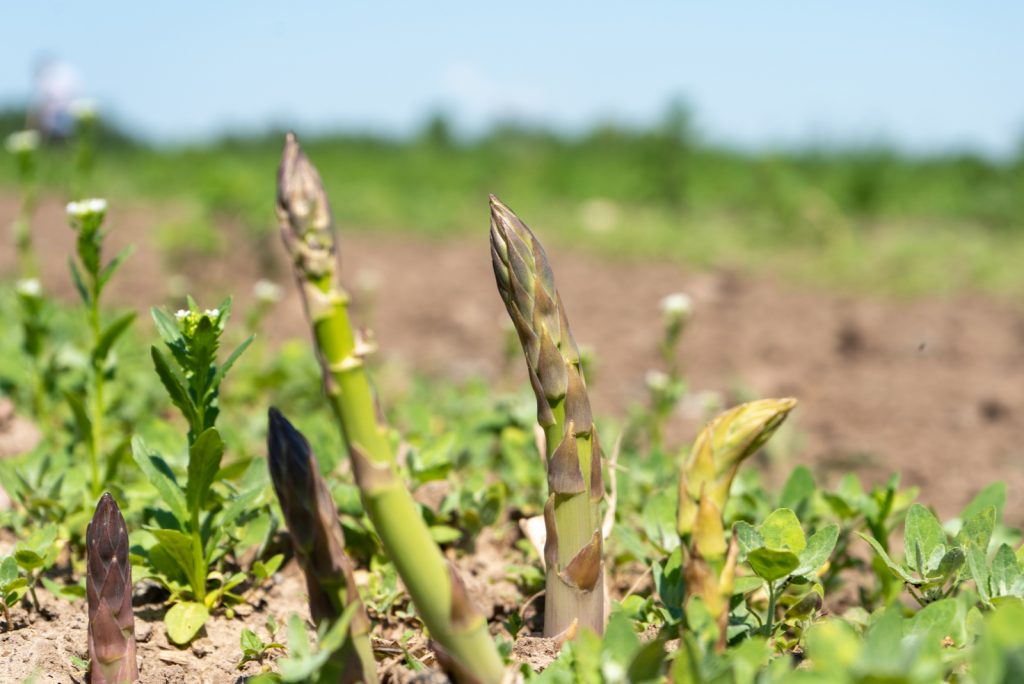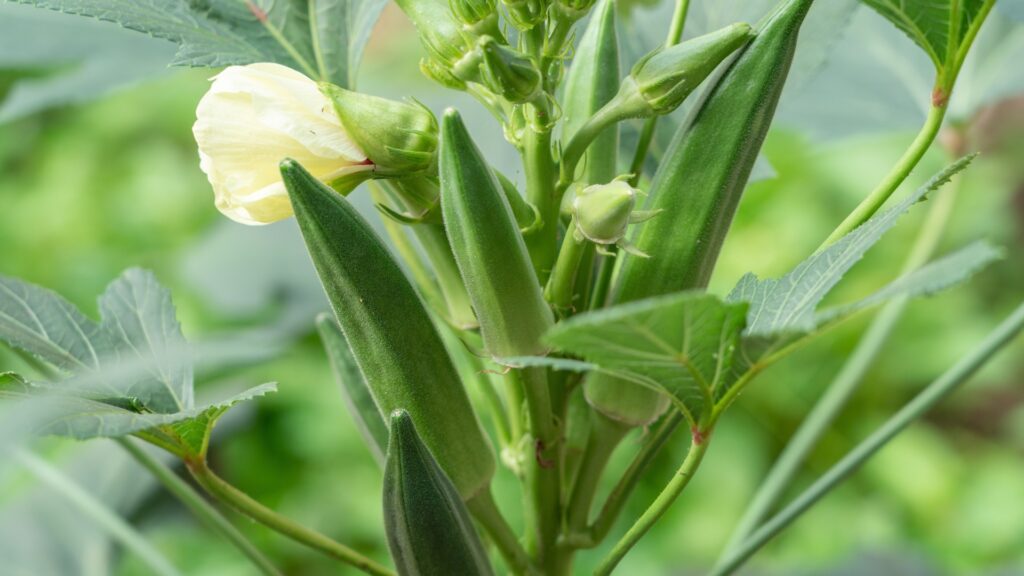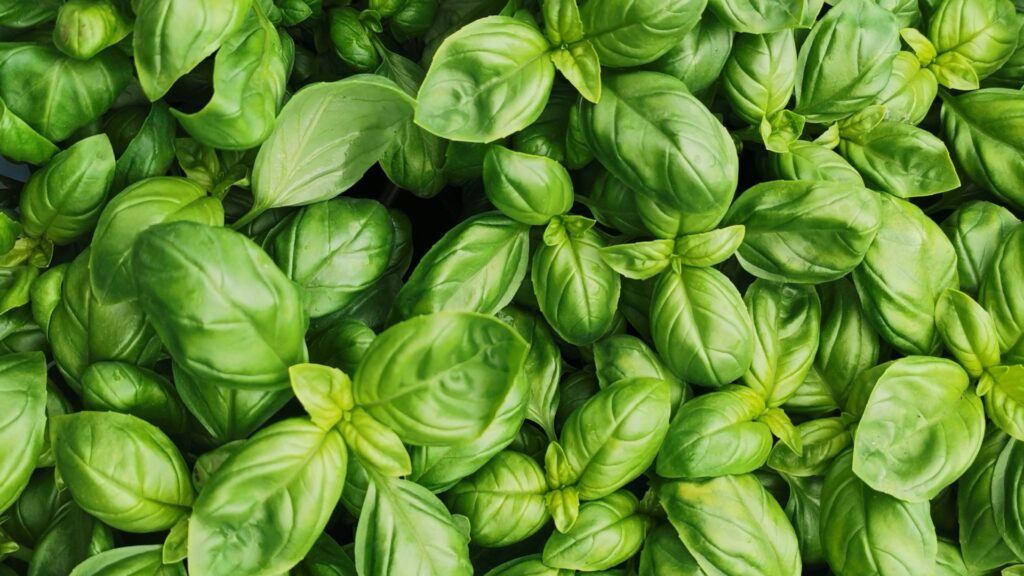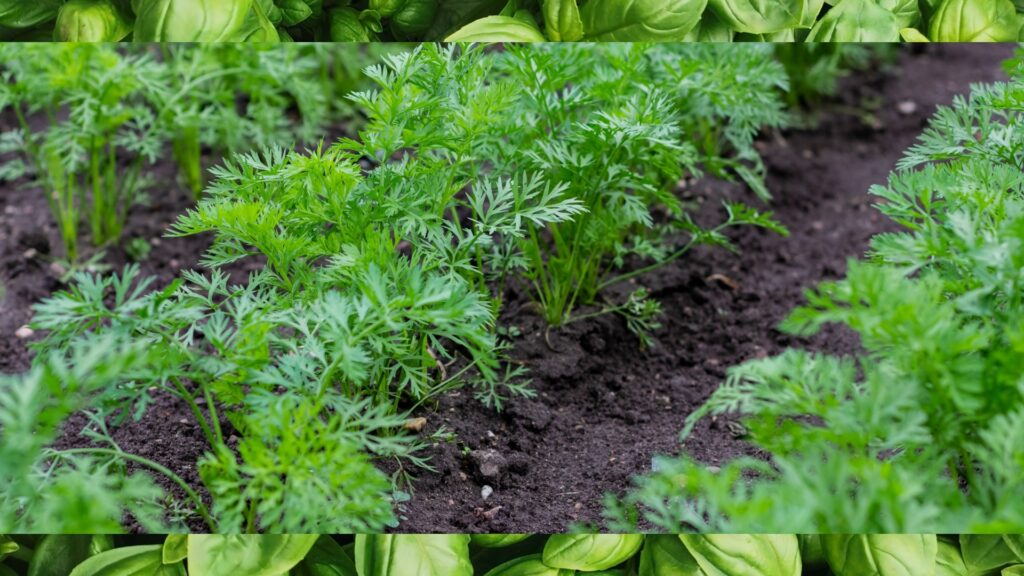We’ve all heard of the neighbor from hell—but did you know your tomatoes can have one too?
In the wild world of companion planting, some plants are match made in heaven, while others are a recipe for disaster. Plant the wrong pair together, and you’ll be digging your own gardening grave.
If you’re dreaming of a bumper tomato crop, it’s time to break up some bad garden relationships. Steering clear of these leafy troublemakers is the secret ingredient to a thriving patch and a harvest that’ll have your neighbors green with envy.
What Is Plant Incompatibility?
Before we move on, you need to know what makes two plants incompatible. Each plant, whether it’s a veggie, fruit, herb, or flowering plant, requires different growing conditions.
Some plants can thrive in similar growing environments, so planting them together is an excellent idea. But what happens when two plants need different conditions and you plant them near each other?
First, let’s discuss soil moisture. Some plants thrive in moist soil types, whereas others prefer drier conditions and show excellent drought tolerance. If you plant moisture-loving plants near plants that don’t tolerate high moisture content, you risk rot.
The opposite problem is dehydration, so a moisture-loving plant is in danger if you don’t ensure enough moisture.
If a certain plant enjoys full sun, you should never plant it near taller plants because they’ll block sunlight. Tomatoes are a tall plant, so it’s not a good companion to short, sun-loving plants.
Two plants may have different nutrient requirements. Some need more nutrients and require frequent fertilization. If you grow a plant with low nutrient needs too close to your tomatoes, fertilization can kill it.
Some plants attract pests or are susceptible to diseases and will put their sensitive neighbor in life-threatening situations.
Certain species emit chemicals that can impact the flavor of other plants.
If you want to avoid all these issues, here are the plants you should never grow near your prized tomatoes!
1. Corn
Let’s start with tomato enemy No. 1: corn! What can go wrong if you plant corn near tomatoes?
The biggest problem for corn growth is the notorious pest, corn earworm. (1) The larvae of this highly destructive insect feed on each part of the corn plant.
These pests also go by another name, tomato fruitworms, so I’m sure you can guess why you need to avoid planting corn and tomato near each other.
Corn earworm larvae will settle themselves in the tomato fruits and start munching on stems and foliage. They’ll eat the crop inside out, making it inedible for us.
The main problem with these pests is that you can’t remove them when they’re inside the tomato fruits.
If you want to save both the corn and tomato from this deadly creature, never, ever plant them close together.
2. Dill
Tomatoes and dill have a pretty toxic relationship. If you plant them near each other, you won’t notice any difference in the growth rate or overall health of each.
Dill is renowned for its ability to deter many pests, so you don’t need to worry about pest infestation in your tomatoes.
Where’s the problem, then? Well, the issue arises when dill enters its mature growth stage. It inhibits the growth of tomato roots, which results in stunted growth.
So, tomatoes are definitely not on the list of dill companion plants. Many gardeners recommend planting tomatoes and dill close together and then moving the dill to another location before it reaches the mature stage.
Honestly, I wouldn’t risk it since there are many excellent tomato companions out there.
3. Cabbage
Another veggie you shouldn’t plant next to your tomatoes is cabbage and all other brassicas, such as broccoli or kale.
Cabbage loves to eat so you need to supplement the soil with nutrients constantly. If you plant tomatoes near cabbage, the cabbage will inhibit its growth by stealing all of its nutrients.
So, tomatoes and cabbage aren’t good companions because they’ll compete for nutrients in the soil, and the tomato will most likely lose the battle.
If a tomato plant lacks essential nutrients, it can’t display any new growth or generate fruit. You’ll have nothing to harvest, which is pretty discouraging considering how much time you spent caring for your plants.
4. Walnut
Remember when I mentioned that some plants emit chemicals? That’s exactly what a walnut tree does. It’s considered allelopathic, which is a term for the process of a plant releasing chemicals. In this particular case, the chemical is juglone. (2)
Even though this process has been studied, gardeners agree that planting tomatoes near walnuts won’t end up well.
What happens here is that juglone becomes toxic when it comes into contact with oxygen, which inhibits the growth of tomato plants.
You may have heard that walnuts and their shells shouldn’t be added to compost; the chemicals they emit are actually the reason for it.
Another problem is that tomatoes can wilt if planted near walnuts. The main cause of this is a disease known as walnut wilt.
It’s obvious that these two delicious crops don’t get along well, so don’t force it!
5. Potatoes
Potatoes and tomatoes are an excellent combination in many dishes, but in the garden it’s a completely different story.
Both crops are sensitive to the same soil-borne diseases. If a tomato gets a disease, it will most likely spread it to potatoes and vice versa.
Another reason why you shouldn’t plant these two together is root damage. This won’t happen during the growth but rather at the time of harvest.
When harvesting our potatoes we may accidentally pull the tomato roots and cause serious damage that leads to blossom end rot.
If you’ve been considering planting tomatoes near potatoes, cross it off your to-do list.
6. Fennel
Here comes the sworn enemy of all tomatoes: fennel! I like to call fennel an introvert because it doesn’t get along well with many plants.
Interestingly, there hasn’t been much concrete evidence that proves these two plants should never be planted near each other.
What many gardeners believe is that fennel emits a chemical that can hinder tomato growth. Honestly, this doesn’t make much sense because fennel is related to carrots, and tomato is one of the best carrot companions.
So, are fennel and tomato really incompatible? According to gardeners, yes.
I don’t recommend testing it; it’s better to be on the safe side and grow some proven companions.
7. Cucumber
Nothing tastes better than cucumbers and tomatoes in a Mediterranean salad. But, if you want to grow cucumbers and tomatoes in your garden, you’ll need to ensure enough space between them.
You’ll frequently see these plants grown near each other in many gardens, so where’s the problem? Cucumbers and tomatoes are susceptible to the Cucumber mosaic virus (3) and phytophthora blight (4), and if one has it, it will most likely spread to the other.
If you wanted to grow these two together, you’ll need to rethink it.
8. Rosemary
Are you surprised to see rosemary on this list? I’ve heard so many people recommend growing rosemary near tomatoes because it’ll enhance the flavor.
I would recommend mixing these two, but only when cooking.
Rosemary will steal nutrients from the soil, leaving your tomatoes hungry and unhappy.
These two also have different care requirements. Rosemary isn’t a fan of moist soil and will grow better if you allow the soil to dry. On the other hand, tomatoes appreciate when their soil is moist (not waterlogged).
So, if you want to get more tomatoes, it’s better not to grow them near rosemary.
9. Eggplant
Tomatoes and eggplants might seem like a great duo since they both belong to the nightshade family, but in the garden, they can cause each other more harm than good.
The biggest issue? They’re both highly susceptible to the same diseases and pests, especially blight and flea beetles.
If one plant gets infected, the problem will spread quickly, leaving you with damaged or completely ruined crops.
Another concern is nutrient competition. Both tomatoes and eggplants are heavy feeders, so planting them together can lead to stunted growth and lower yields. If you want a successful harvest, it’s best to keep these two separated!
10. Peppers
It might come as a surprise, but tomatoes and peppers aren’t the best garden buddies. Since both belong to the nightshade family, they share many of the same vulnerabilities, including common diseases like bacterial spot and blight.
Peppers also attract aphids and spider mites—pests that will quickly move from one plant to the other, creating a full-blown infestation before you even realize it.
If you’re growing both crops, make sure to separate them to reduce the risk of disease and pest outbreaks. That way, you’ll have a better chance at harvesting healthy, thriving plants.
11. Asparagus
Asparagus is a low-maintenance perennial that thrives in many home gardens—but not near your tomatoes. While it may seem harmless, the issue lies in their differing nutrient needs and growth cycles.
Tomatoes are annuals and heavy feeders that quickly deplete soil nutrients, especially nitrogen and phosphorus, during their rapid growth. Asparagus, on the other hand, has a long establishment period and needs consistent nutrition to produce spears year after year.
Planting these two together can stress both crops, reducing asparagus vigor and causing nutrient deficiencies in your tomatoes.
Another issue is space: asparagus crowns spread underground over time and can interfere with tomato root development, stunting growth and affecting fruit production.
If you want strong asparagus beds and bountiful tomatoes, it’s best to give each their own space in the garden.
12. Sunflowers
Sunflowers are stunning and loved for attracting pollinators, but they’re not great neighbors for tomatoes. Their impressive height might make them ideal for some parts of the garden—but not near sun-loving crops like tomatoes.
The problem is twofold. First, tall sunflower stalks will cast shade over tomato plants, limiting their access to sunlight. Since tomatoes rely on plenty of direct sun to flower and fruit, this can result in fewer and smaller tomatoes.
Second, sunflowers produce allelopathic compounds that can inhibit the germination and growth of nearby plants, including tomatoes. These natural chemicals, released into the soil, may slow root development and impact overall plant health.
While they may be a beautiful addition to your yard, keep sunflowers at a distance from your tomato patch for a more productive harvest.
13. Mint
Mint is one of those herbs that everyone loves to grow—it smells great, grows fast, and deters pests. But don’t let its charm fool you when it comes to tomato pairing.
The biggest issue with mint is its invasive nature. Once established, it spreads aggressively through underground runners and quickly takes over garden space. If planted near tomatoes, mint can overrun the area, choking out tomato roots and competing for moisture and nutrients.
Additionally, the dense mint growth can limit airflow around tomato plants, creating a humid environment that promotes fungal issues like powdery mildew and blight.
If you want both plants in your garden, it’s best to grow mint in containers and keep it well away from your tomato patch.
14. Okra
Okra may be a warm-weather favorite, but it doesn’t make a great neighbor for your tomatoes. These two plants often clash due to their similar pest problems—especially aphids and stink bugs.
Another concern is space. Okra grows tall and bushy, which can overshadow tomato plants and reduce their sunlight exposure. Less sun means fewer flowers, and fewer flowers mean fewer tomatoes on your plate.
Both plants are also heavy feeders, pulling essential nutrients from the soil. Without proper spacing and fertilization, one or both may end up underperforming.
For healthier, more productive crops, grow okra in a separate bed and save that sunny, nutrient-rich spot for your tomatoes.
15. Basil
This one might come as a shock—basil is often recommended as a tomato companion, but only when managed correctly. While young basil plants can actually benefit tomatoes by deterring certain pests like whiteflies and hornworms, the relationship can sour if you’re not careful.
If basil becomes too dense or overgrown, it reduces airflow around tomato plants, creating the perfect breeding ground for fungal diseases such as early blight and powdery mildew. It can also crowd out tomato roots, leading to competition for water and nutrients.
Additionally, some gardeners have reported flavor interference when basil is planted too close—affecting both crops. For the best of both worlds, consider planting basil nearby but not in the same bed, or use containers to keep their growth in check.
16. Carrots
Carrots and tomatoes might not seem like they’d clash—but they definitely have their differences underground. The issue here isn’t disease or pests, but rather root competition.
Carrots develop deep taproots while tomatoes form a wide, shallow root system. When grown too close together, these roots can become entangled and stressed, slowing the growth of both crops. Harvesting carrots can also disturb tomato roots, causing shock or damage during their peak fruiting period.
Moreover, tomatoes can release allelopathic compounds into the soil that may stunt carrot development, especially in younger plants. For a more harmonious garden, it’s better to give these two root-focused crops a little breathing room.
Tomato is a friendly plant and can benefit from companion planting in many ways. But you’ll get the opposite effect if you don’t choose the right plants. Simply avoid growing the plants from this list and you’ll prevent many issues.
Until next time!
References
1. corn earworm – Helicoverpa zea. (n.d.). https://entnemdept.ufl.edu/creatures/veg/corn_earworm.html
2. Sellmer, Jim, PhD. Landscaping and Gardening Around Walnuts and Other Juglone Producing Plants. https://extension.psu.edu/landscaping-and-gardening-around-walnuts-and-other-juglone-producing-plants
3. “Cucumber Mosaic Virus.” Cucumber Mosaic Virus, www.apsnet.org/edcenter/disandpath/viral/pdlessons/Pages/Cucumbermosaic.aspx.
4. Phytophthora Blight. Center for Agriculture, Food, and the Environment. https://ag.umass.edu/vegetable/fact-sheets/phytophthora-blight

